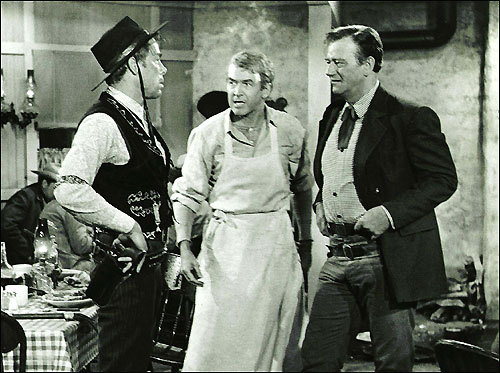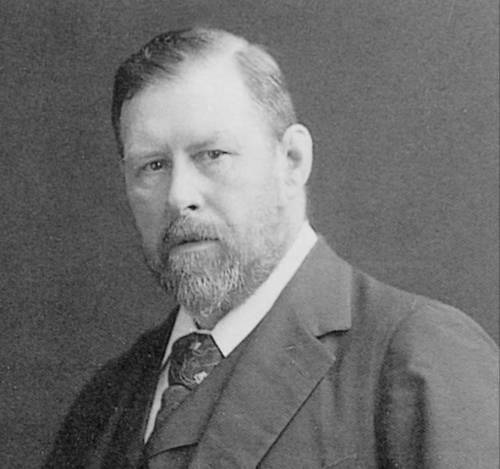Well, it was our first day at the pool today. Gabriel, Julia, and I had a great time at Splash in the Boro, the community pool/waterpark here in Bulloch, County jaw-juh. Gabriel swam so hard that he fell asleep in the car on the way home while eating a pretzel!
Happy Birthday, John Wayne! My 5 favorite John Wayne films...
 |
| Red River (1948) |
 |
| The Searchers (1956) |
 |
| Rio Bravo (1959) |
 |
| Hatari! (1962) |
 |
| The Man Who Shot Liberty Valance (1962) |
A soul track for today:
Duke-Duke-Duke-Duke of Earl... Yep, Gene Chandler folks. "Groovy Situation," a 1970, late-period smash by the Duke, went all the way to #12 in the U.S. pop charts. It's very much a song of the era - and when you hear it movies like Anchorman, it works as a nostalgic number that actually hasn't aged that badly.
Chandler was born in Chicago in 1937, where he still lives. His first band was an R&B group called the Du-Kays in the late 1950s. After a stint in the Army, he re-joined them, then went solo. In 1962, "Duke of Earl," one of the most famous songs in the history of rock and roll, hit the airwaves. His real name was Eugene Dixon, but he changed his last name to Chandler (inspired by the actor Jeff Chandler) because it had a nice ring. He had a good career, his song "Rainbow" another high point.
http://www.genechandler.com/biography.html
Movie Review
 |
| The Woman in Black |
Daniel Radcliffe, grown up now, gives a sturdy, solid performance, in the satisfying Victorian chiller The Woman in Black, taken from the oft-adapted, durable 1983 Susan Hill novel of the same name.
Radcliffe, with his appropriately haunted visage, plays Arthur Kipps, (an underwritten character), a London barrister assigned to go way out into the east England marshy fens to rummage through the house and papers of one of his firm's recently deceased clients. The small village he lands in seems to hold its secrets close to the vest, but the house itself, describe beautifully by Hill, is certainly a haunting ground for restless, noisy, creeping spooks. The house itself is surrounded by a tidal marsh that isolates the house and makes it unreachable for roughly half the day. (Note: film is a marvel of location shooting.)
There's not a whole lot of plot. In Hill's 160-page book (give or take), Kipps basically just made his way around the house, and much of the goings-on - the strange noises of sinking horse carriages, a rocking chair swaying back and forth - probably weren't deemed scary enough for modern film audiences. So naturally the film jacks up the BOO moments! Director James Watkins and screenwriter Jane Goldman shouldn't be docked for adding scenes that aren't in the book because they are able to capture the mood, the slow-burning sense of dread very well. I was generally uncomfortable, on edge, and I was pleased that the film didn't over-rely on tropes and hackneyed images, though there are some, of course. It's a throwback to the Hammer Studio horror films of old (funny, because this is a Hammer production), well-thought out, with good production design, an appealing lead, and an appropriately dark ending - that, unfortunately, still doesn't capture the blunt fatalism of the novel's shocking last page. With the always-reliable Ciaran Hinds (who has one of cinema's great faces) and recent Oscar nominee Janet McTeer as a very troubled husband and wife.
(***)
Book Review
Toni Morrison's slim new novella (147 pgs.) Home (2012) follows the troubled journey home to Georgia of Frank Money, an African-American Korean War vet. Frank's young sister Cee is working for a mysterious, eugenics-obsessed doctor in an Atlanta suburb.
The novel weaves in and out of the past and present. Frank and Cee recall their days growing up in the dirt-poor, segregated south, which allows this great author the opportunity to delineate the tough-love bonds that link together a tough, hardened, scrappy community of the disenfranchised; Morrison's joyous, lean prose sings during these passages.
Frank is haunted by the war and the deaths of his buddies, boys he grew up with. As he makes his way south through America, he realizes that his sister is the only person left in the world whom he loves fully, whom he understands.
It's an America - and a South - still governed by racism and bigotry, and Morrison lyrically paints this world without stereotype or heavyhanded-ness; she doesn't overdo the monstrousness of the white characters. There's a slight fable-like quality to the book - images of Hansel and Gretel and naive, captured princesses come to mind - but also a toughness to that propels the plot and makes all the characters a little richer than they first appear.
Morrison has several themes she's working with here - ideal love, guilt, the racial persecution of blacks, the transcendence of the earthly body and spirit - and yet it doesn't feel like a novel weighed down by symbolism, abstraction, or writerly messiness. It's a simple story done very well. For those not familiar or keen to Morrison, it's a good start; for those who've read her work, it may be seem familiar, underwhelming.
(***1/2)
 |
| The Bram |
My history calendar informs me that today was the day, in 1897, when Bram Stoker's Dracula went on sale in London. Okay, I really like the novel - in a lot of high schools, it's required underclass reading for English classes - and it's household lore now by now, part of the world's consciousness - Van Helsing, images of Bela Lugosi, "children of the night," etc. But what of Stoker? Can anyone name one other Stoker work? Who was he?
Well, that's why I'm here, to bat-swoop in with 20 Facts about Bram Stoker for you guys.
1. He was Irish, born in Dublin in 1847.
2. Stoker was a sickly child, often confined to bed and the audience of bedtime horror stories by his charity worker/writer mother.
3. While at Dublin's Trinity College, he was an excellent student; he also worked as a civil servant.
4. After graduation, he worked as a drama critic and freelance journalist.
5. As a drama critic, he met and became friends with distinguished stage actor Henry Irving.
6. He became Irving's manager and was so for the next three decades, traveling with him, writing his letters, accompanying him to the U.S.
7. No, no, no. It wasn't like that. Stoker married an aspiring actress, Florence Balcombe in 1878; they moved to England shortly after to join Irving.
8. Two years after the birth of his only child, Stoker had published his first book of fiction, Under the Sunset (1881), a collection of fantasy stories.
9. His first novel, The Snake's Pass, was published in 1890; it is a romance set in Ireland, the only Stoker novel set in the country of his birth.
10. Stoker was a strong, athletic guy; in college, he excelled at football and weightlifting. He was named the University Athlete during his time there, graduating with a degree in mathematics.
11. His long friendship and employment with Irving brought him into contact with many writers and artists: Mark Twain, Alfred Lord Tennyson, Walt Whitman. He also met Richard Burton, Henry Morton Stanley, Teddy Roosevelt, William McKinley, and William Gladstone, the Prime Minister.
12. He started work on Dracula, seven years before it was published.
13. A family visit to the north Yorkshire seaside town of Whitby in 1890 helped inspire the novel; it was in the town library that Stoker found the name "Dracula."
14. During his lifetime, Stoker wasn't famous for the novel; in fact, he was known most for 1906's Personal Reminiscences of Henry Irving.
15. He suffered multiple strokes in 1920 and died of what may have been tertiary syphilis.
16. Dracula, which has done more than any other work to thrust vampires and the whole mythology of them into the mainstream of 20th century pop culture, wasn't famous during Stoker's lifetime; none of his obituaries even mentioned it.
17. Stoker never visited Eastern Europe, whose topographical features figure largely in the book.
18. For over 20 years, Stoker was the business manager at London's Lyceum Theatre, where he was working at when he wrote the novel.
19. Lair of the White Worm is maybe Stoker's next best-remembered horror novel today; it was made into a 1988 movie by Ken Russell co-starring Hugh Grant. It's a horror tale based on the legend of the Lambton Worm, a Lochness-like monster reputedly living in northeast England.
20. Another notable Stoker work: The Jewel of Seven Stars (1903), set in Cornwall and London, an exotic, sometimes gruesome tale about a lawyer and archaeologist battling a revived mummy (or something...)
Images courtesy of :
http://sbccfilmreviews.org/wp-content/uploads/2009/01/searchers2.jpg
https://blogger.googleusercontent.com/img/b/R29vZ2xl/AVvXsEhY6mCu2s-4UmJmAiefi3BrZCPZzQK4e0PA0xz6WqSEyYRMZWiCXBOPsIUFDr4SQvKRt-E8OeuNh5vMDOmV_5ky457InEnyM1IkHV5ATfBth6CS7N5zWix0BTPZX4R6-BU4d1m6a3SKAt3o/s1600/red%252520river.jpg
https://blogger.googleusercontent.com/img/b/R29vZ2xl/AVvXsEiIeiu3LWAQbmhCl17HqPxZ2CK7XKOhSFVwY6pNNxwkaFKkcm80Z1Eis5wkqdSs24KYHDp1uPND6oGIb7224Uc6fJohTe2YTiieim8C-dayYdk__uhyphenhyphen2kQ_ZMxcj4QCZGeUN3wp-RPhTMNb/s1600/Rio+Bravo.jpg
http://www.film.queensu.ca/cj3b/Photos/MovieFrames/Hellfighters/HatariCJ6.jpg
http://www.nativeamerican.co.uk/libertyvalance2.jpg
http://www.genechandler.com/biopagegene.jpg
https://blogger.googleusercontent.com/img/b/R29vZ2xl/AVvXsEiOHyDu2F1ylIjz-KcvORgappileGVROvvXXov2hxvVB41a0HrbwwR0hspwWdKJ6JfrsXyzcTJeYx8FYWkbIpROuIiI0hXF9aluQMpz-5faKWH57NC8xmwfrt7E7Rgmu00tF2ntWNowNwM/s1600/the+woman+in+black+daniele+radcliffe.jpg
http://media.miamiherald.com/smedia/2012/05/04/10/51/J2WkM.Em.56.jpg
Information taken from:
http://www.genechandler.com/biography.html
http://www.bramstoker.org/
http://www.unexplainable.net/info-theories/10_facts_about_bram_stoker.php
http://www.bramstokerestate.com/BramStoker,_Himself.html
http://www.history.com/this-day-in-history


I was really never a John Wayne fan...but I am and will always be a fan of western movies.
ReplyDeleteMy favorite John Wayne movie is 'The Shootist.'
I enjoyed the Clint Eastwood movies much more than John Wayne. I still have tapes of Eastwood movies which I should burn to DVD's.
Unforgiven is maybe, possibly my all-time favorite movie. It's either that or Wayne's Rio Bravo.
DeleteNot just favorite western - favorite movie.